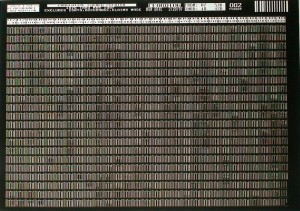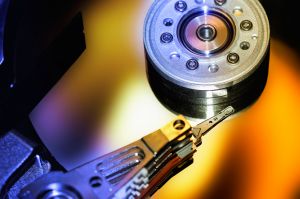July 29, 2011
Convert Microfiche vs Convert Microfilm
A mistake that occurs from clients or organizations who are not familiar with micrographics is mixing up microfiche and microfilm. Every industry or niche has its own lexicon, and in the micrographics industry there are major differences between microfiche and microfilm. The purpose of this article is to describe the differences between microfilm and microfiche.
Microfilm- It’s rolled.
In the most simplest terms, microfilm is rolled and microfiche is flat. Microfilm is also called roll film, and microfilm reels, microfilm rolls. Sometimes the width of the film is used to describe the types, such as 16mm roll film or 35mm microfilm.
Microfilm is usually stored in plastic or metal spools. Some old microfilm is stored in metal pans. Yes, microfilm generally looks like small versions of movie reel film, except without the classic sprockets.
Microfilm cartridges look different that the standard reel spools- but only on the outside. The film is enclosed in a hard metal square casing to protect it. Kodak and 3M were innovators in producing microfilm cartridges.
There is no such thing as a 35mm roll film cartridge; there are only 16mm microfilm cartridges.
The actual microfilm frame placement and types vary, such as duplex film, positive, negative, duo, fixed, blipped, variable, etc, however that is a different topic and is unrelated to identifying microfilm vs microfiche.
Microfiche- It’s flat.

A jacketed microfiche
Microfiche are flat “cards”, usually 4.13 x 5.83 inches, containing a few frames on them. Whereas a microfilm may hold 500 (35mm) to 20,000 frames (duplex), a microfiche card may hold as many one one frame to a couple of hundred (COM fiche).
Jacketed microfiche are simply roll film cut up into strips and inserted into plastic sleeves. Some people get confused if they don’t see the jacket sleeves, but it could be that the microfiche was duplicated. If it was duplicated, the copy may still have faint lines highlighting the border of the jackets. Since jackets are created from microfilm strips, they can come in the 16mm microfiche or 35mm microfiche varieties. A 16mm jacket has more rows and columns, and thus can hold more frames that a 35mm jacket (1-6 frames).
COM microfiche is computer generated and contain very small frames (usually with a 42x or 48x reduction ratio).
Step-and-repeat microfiche were created with a step-and-repeat camera. Many times they contain manuals or books and can hold hundreds of frames.




